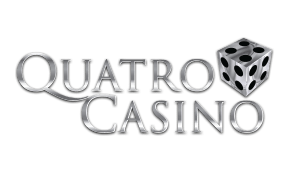
Poker is not just a game of skill; it’s an intricate dance between probability, psychology, and strategic decision-making. Within this matrix lies the secret to becoming a successful poker player and safeguarding your bankroll. Welcome to the world of bankroll management—the art of balancing risk and reward to ensure long-term profitability. To help you decode this essence, we delve deep into the poker matrix and uncover the key principles of effective bankroll management.
1. Set Your Limits
The first step towards mastering the poker matrix is to define your limits. Set a strict budget for your bankroll—this is the amount you are willing to invest in poker. Never gamble with money you can’t afford to lose. Determine the stakes you are comfortable playing and stick to them. Whether you’re a recreational player or a high roller, knowing your limits will help you make rational decisions, stay disciplined, and protect your bankroll from unnecessary risks.
2. The Rule of Thumb: The 5% Rule
As you navigate the poker matrix, one golden rule should guide your bankroll management strategy—the 5% rule. This rule suggests that each cash game buy-in or tournament entry fee should never exceed 5% of your total bankroll. For example, if your bankroll stands at $1,000, the maximum buy-in should be $50. Adhering to this principle ensures that you have enough room for variance and minimizes the risk of going broke during downswings.
3. Embrace the Variance
Variance is an essential component of poker, where luck has a role to play alongside skill. Even the most skilled players experience swings in their results. To mitigate the impact of variance on your bankroll, make sure you have a sufficiently large bankroll to withstand the inevitable ups and downs. As a general guideline, a bankroll of 20 to 30 buy-ins is recommended, depending on the game format and your risk tolerance.
4. Protect Your Bankroll: Don’t Chase Losses
In the poker matrix, emotions can be your worst enemy. After a tough loss or a series of bad beats, it’s natural to feel compelled to recoup your losses quickly. However, the urge to chase losses often leads to reckless decisions and a further depletion of your bankroll. Remember, poker is a long-term game. Stay patient, maintain emotional discipline, and resist the temptation to play higher stakes in a frantic attempt to recover what’s lost. Always prioritize long-term profitability over short-term results.
5. Continual Evaluation and Adjustment
The poker matrix is dynamic, and so should be your bankroll management strategy. Regularly evaluate your progress, assess your profitability, and make adjustments where necessary. If your bankroll has grown substantially, you may consider moving up in stakes. Conversely, if you’re faced with a dwindling bankroll, it might be time to drop down to lower stakes until you regain stability. Flexibility and adaptability are key to thriving within the poker matrix.
Embarking on the journey to master the poker matrix requires discipline, resilience, and an adept understanding of bankroll management. By setting limits, adhering to the 5% rule, embracing variance, avoiding chasing losses, and making continual evaluations and adjustments, you can navigate the complex world of poker with confidence. Uphold the essence of bankroll management, and may the cards be forever in your favor!

































